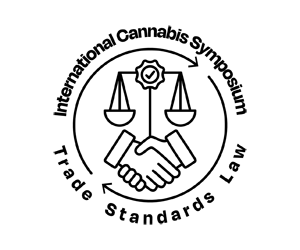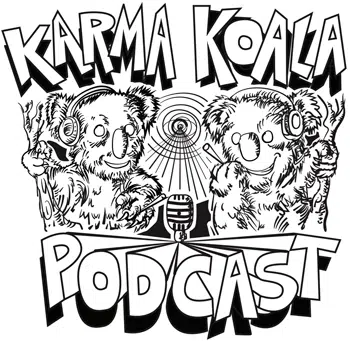The topic of marijuana (cannabis) legalization moved into headlines following Colorado’s and Washington’s decisions to permit recreational use of the drug in 2012. Yet, these changes reflect nearly 50 years of evolution in drug policy.1
KEY TAKEAWAYS
- More states are legalizing marijuana for medical or recreational use, and this movement has created a patchwork of laws and policies on how the drug is treated.
- Among the states that allow the medical use of marijuana, laws can vary greatly in terms of the medical conditions that can be treated by the drug.
- Policymakers face complex decisions on how to regulate marijuana. For example, the goal of maximizing revenue may conflict with the goal of reducing recreational use.
FULL REPORT
By
The topic of marijuana (cannabis) legalization moved into headlines following Colorado’s and Washington’s decisions to permit recreational use of the drug in 2012. Yet, these changes reflect nearly 50 years of evolution in drug policy.1
The relaxation of state laws on the possession and use of marijuana can be traced back to 1973, when Oregon became the first state to decriminalize the possession of modest quantities of marijuana, with a maximum penalty of a $100 fine. Then, in 1996, California approved marijuana usage for medical purposes. As of January 2020, about half of the states and numerous local jurisdictions have decriminalized possession to varying degrees, and 33 states currently have policies that allow patients to use marijuana if they qualify based on their medical diagnosis.2
Data for recreational-use states do indicate growth in legal sales and use. For example, in Colorado, monthly recreational sales were between $10 million and $20 million in early 2012; these sales have stabilized to around $90 million per month in 2018, or around $1 billion per year (just under $200 per person per year).3 Reported marijuana usage by adults in Colorado rose from 10.4% in 2011-12 to 18.1% by 2017-18.4
Notable increases in usage after legalization are also evident in Washington and Oregon; in fact, Oregon had the second highest usage rate in the country in 2017-18, with 20% of adults using marijuana at least one time in the past month. In contrast, national usage has been only slowly increasing, up from 7.1% in 2011-12 to 9.8% in 2017-18. Longer-term trends indicate that daily marijuana use by all adults has remained relatively stable and at low levels since 2000; some subgroupings put daily rates at below 3%.
A Closer Look at the Eighth District States
Marijuana is treated differently among the seven states that are part of the Eighth Federal Reserve District:5
- Three states (Illinois, Missouri and Mississippi) have decriminalized personal possession of marijuana to some degree.
- Three states (Arkansas, Illinois and Missouri) currently have or will have medical marijuana programs in 2020.
- Illinois has allowed sales of marijuana for recreational use.
- Three states (Indiana, Kentucky and Tennessee) continue to criminalize all possession of marijuana.
Adult marijuana use across these seven states is near or below the national average, with 2016-17 estimates ranging from 7.9% in Kentucky to 9.6% in Indiana.
On Jan. 1, 2020, Illinois became the first state in the Eighth District to allow the sale of marijuana for recreational use. January sales reached just under $41 million. Assuming no growth in sales, annually this is $480 million, or about $12 per capita. The Colorado experience suggests sales are likely to exceed this amount, assuming adequate supply.
The year 2020 also marked the addition of Missouri as a state allowing sales of medical marijuana. The table below summarizes key statistics of the medical markets in the three District states that allow these sales; it provides a snapshot of the supply and demand in the market in each respective state. Assuming similar demographics and medical needs in these states, varying state policies explain the different outcomes.
| State | First Year of Medical Marijuana | Initial Number of Patients | Current Number of Patients | Number of Licensed Dispensaries in Operation | Average Number of Patients per Dispensary in Operation |
|---|---|---|---|---|---|
| Illinois | 2015 | 2,663 | 76,939 | 55 | 1,399 |
| Arkansas | 2017 | 5,459 | 15,466 | 6 | 2,578 |
| Missouri (estimate) | 2020 | 21,000* | [46,319; 128,070**] | 192 | [241; 667] |
| * Reported number of preregistered patients | |||||
| ** The lower-bound estimate is based on the average share of population registered as patients (0.8%) across all U.S. states where medical marijuana is legal, and the higher-bound estimate is based on the maximum share in any state, which is Colorado at 2.1%. | |||||
| NOTES: Arkansas has 32 licensed dispensaries, but only six are operating. The Missouri figure for licensed dispensaries in operation assumes every approved license applicant will operate a dispensary. | |||||
| SOURCES: Arkansas Department of Health, 2019; Illinois Department of Public Health, 2019; Haslag, Crader and Balossi; and author’s calculations. | |||||
Initial patient enrollment in Illinois (2,663) and Arkansas (5,459) has steadily increased over time and at similar growth rates. Although Arkansas’ population is only a quarter of the population of Illinois, initial enrollment was more than twice as high. In contrast, initial reports for Missouri (with a population around half of Illinois’) indicated that over 21,000 patient cards were issued in 2019, well before the program came into effect.6
One reason for different enrollment rates is the differences in qualifying medical conditions among these states. For example, post-traumatic stress disorder (PTSD) was the top condition of qualifying patients for medical marijuana in Illinois at over 20% in 2019. In Arkansas, intractable pain, which is not included in the Illinois program, is the top qualifying condition at over 30%, whereas PTSD was reported by only 12% of qualifying patients. In Missouri, the list of qualifying conditions appears to be broader than for both Illinois and Arkansas by including:
- “a chronic medical condition that is normally treated with prescription medication that could lead to physical or psychological dependence” and
- “in the professional judgment of a physician, any other chronic, debilitating or other medical condition.”7
State governments are also responsible for determining the supply in the market and approving facilities to grow, produce and dispense marijuana to patients. Missouri has licensed many more dispensaries than both Illinois and Arkansas, meaning Missouri will maintain a system with the fewest patients per dispensary when they start operating this year. Fewer patients per dispensary could result in smaller establishments with lower revenue per store or, if fixed costs are high enough, some licensed dispensaries deciding not to operate. For example, in Arkansas, only six of the 32 licensed dispensaries are in operation because of a range of regulatory and market challenges.
Do Policies Align with Economic Theory?
While public discourse surrounding the legalization of marijuana often revolves around perceptions toward recreational drug use, an economic argument supporting (or opposing) legalization can be made regardless of one’s moral standing on use.
The medical use of marijuana raises the question of potential medical benefits and costs. One could view any drug from the same lens by asking, do the potential benefits from appropriate use of the drug outweigh the costs or risk of abuse? What makes the medical marijuana market unique to those of other drugs (e.g., prescription narcotics) is how it is treated by policymakers. For example, states typically do not subject prescription drugs to state sales taxes, while medical marijuana has been subjected to both state sales and excise taxes. Therefore, medical marijuana is taxed more like alcohol or tobacco than a medical drug.
The recreational use of any drug may create social costs, such as long-term health problems, injuries, accidents, unemployment, vagrancy and crime.8 As a result of these social costs, the free-market price is likely too low and therefore consumption is too high. Policymakers can attempt to solve this problem in two ways: first is criminal enforcement, which increases the cost of supplying drugs, reducing supply in the market and subsequently pushing up prices. Second is taxation on purchases, which reduces the quantity demanded in the market by increasing the price. In theory, both policies could achieve the same outcome of reducing drug use to a socially optimal level.
Policymakers face the difficult task of taking this theory to practice. Enforcement requires determining the most efficient techniques and the severity of penalization. Policymakers must also account for the adverse consequences of incarceration. On the other hand, taxation requires determining the optimal tax rate, which may vary for different types of consumers. Again, there may be a cost of enforcing this tax on those who seek to avoid payment.9 For both policies, the main challenge is determining the social cost of drug use, which ultimately determines the degree of necessary enforcement or taxation.
Conclusions
Research is still needed to understand the economic impact of recent state policy changes, and differences across states provide researchers with many real-world “experiments” to study. However, with marijuana remaining illegal at the federal level, these firms face additional challenges in operating their businesses, such as lack of access to banking networks or developing interstate supply chains.
While legal marijuana has been touted as a means for improving the fiscal position of states through lowering enforcement expenditures and generating additional tax revenue, the reality is much more complex. First, taxation on medical marijuana use is inconsistent with tax policies on other drugs used in medical treatment. Over time one would expect these policies to converge if a consensus emerges on acceptable medical use. Second, increases in tax revenue from recreational sales likely overstate the fiscal impact or could be short-lived. Consumers are likely to spend a greater share of their income on marijuana and less on other taxable goods, such as alcohol.10 Furthermore, states may use the new tax revenue source as a replacement for existing revenue sources (or future revenue increases).11 Third, as is the case with many types of “sin taxes”—taxes on products such as alcohol, tobacco and the lottery—individuals in lower income brackets are generally more likely to consume these products, thereby producing a regressive tax policy. Fourth, the reliance on sin taxes for revenue creates an incentive for policymakers to set a tax rate that maximizes revenue as opposed to a higher tax rate that would reduce consumption.12
Olivia Wilkinson, a research associate at the Federal Reserve Bank of St. Louis, provided research assistance.
Endnotes
- As of January 2020, eleven states and Washington, D.C., permit the sale of marijuana for adult recreational use. Marijuana sale and use remain illegal under federal law.
- See NORML webpage for a current list.
- See Felix and Chapman for an analysis on Colorado. It is important to note that a portion of these sales could be to nonresidents.
- This is defined as use over the past month. See National Survey on Drug Use and Health, State Estimates.
- Headquartered in St. Louis, the Eighth Federal Reserve District includes all of Arkansas and parts of Illinois, Indiana, Kentucky, Mississippi, Missouri and Tennessee.
- See Edwards.
- See Missouri’s “Frequently Asked Questions for Physicians.”
- See Becker, Murphy and Grossman. The model is designed to apply to any illegal drug, so this assumption means there is no socially beneficial (i.e., medical) case for use. Even with this assumption, the authors find taxation is the preferred policy of enforcement.
- When determining which market outcome is the most efficient, an important consideration is the elasticity of supply and demand for drugs. If demand is inelastic (i.e., because the drug is highly addictive), enforcement may be optimal because consumers will still purchase close to the same amount even with higher taxes. See Becker, Murphy and Grossman for a complete discussion.
- See Anderson.
- See Dadayan for a historical perspective and review of tax policies.
- For example, in the extreme case in which optimal consumption is zero, the optimal tax rate would be excessively high, and consumption (and tax revenue) would be near zero.
References
Anderson, Patrick. “Blue Smoke and Seers: Measuring Latent Demand for Cannabis Products in a Partially Criminalized Market.” Business Economics, January 2020, Vol. 55, No. 1.
Arkansas Department of Health and the Arkansas Department of Finance and Administration. “Medical Marijuana: 2019 Fiscal Year Report.” 2019.
Becker, Gary; Murphy, Kevin; and Grossman, Michael. “The Market for Illegal Goods: The Case of Drugs.” Journal of Political Economy, February 2006, Vol. 114, No. 1.
Dadayan, Lucy. “States’ Addiction to Sins: Sin Tax Fallacy.” National Tax Journal, December 2019, Vol. 72, No. 4.
Edwards, Greg. “Missouri Medical Marijuana Patients Far Exceed Projections.” St. Louis Business Journal, Dec. 3, 2019.
Felix, Alison; and Chapman, Sam. “The Economic Effects of the Marijuana Industry in Colorado.” Federal Reserve Bank of Kansas City Rocky Mountain Economist, April 2018.
Haslag, Joseph; Crader, G. Dean; and Balossi, William. “Missouri’s Medical Marijuana Market: An Economic Analysis of Consumers, Producers, and Sellers.” Report for Missouri Department of Health and Senior Services, 2019.
Illinois Department of Public Health. “Annual Progress Report: Compassionate Use of Medical Cannabis Patient Program Act.” 2019.
Also: see analysis by Marijuana Moment
Federal Reserve Bank Highlights Economic Potential And Health Impacts Of Marijuana Legalization





















